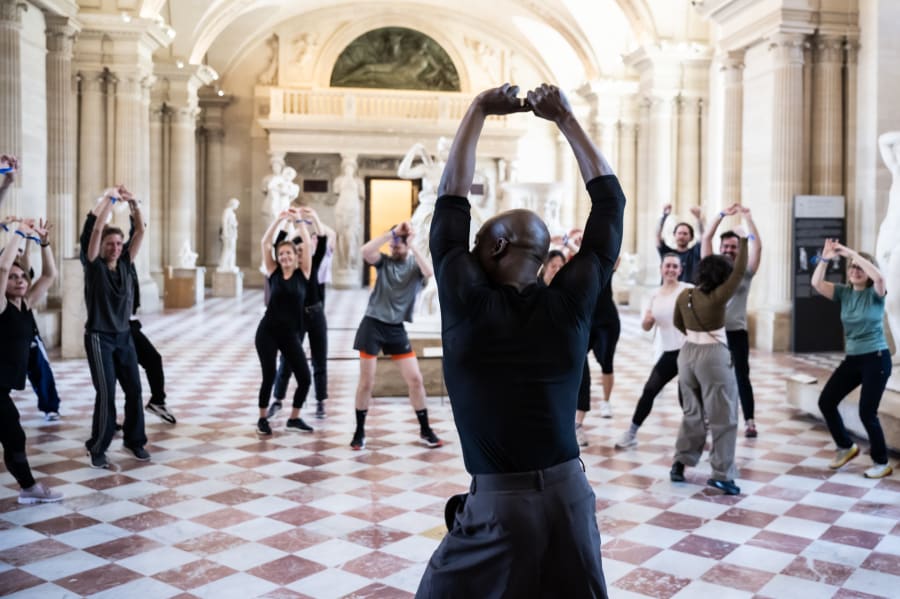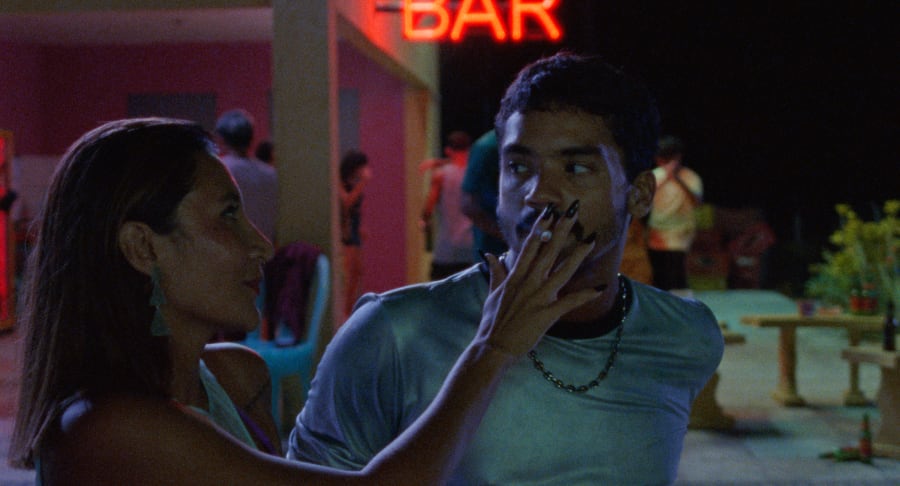Shannon T. Lewis (Canadian, b. 1981)
‘There are few times when I’m alone and I don’t listen to music. My life seems to need a soundtrack. This ranges from soca – the only way to endure cardio workouts – to the great operatic arias, since, in recent years, I started going to the opera regularly with friends. Baroque music combines my love of Renaissance Italy with my unexpected taste for the harpsichord. ‘Pur ti miro, pur ti godo’ from Claudio Monteverdi’s L’incoronazione di Poppea (1643) is a song I’ve been playing over and over since I first heard it. But I could also mention Erykah Badu’s album Mama’s Gun (2000) – maybe because the first time I heard it, I was at the crossroads between adolescence and adulthood.
At home, I usually wear headphones, not only because I like to escape into my own world, but also because I’m able to listen to a track over and over again – I avoid inflicting this on my family, who have complained about it in the past. That said, the collective experience of a concert remains unrivalled. I remember seeing the Cuban singer Celia Cruz live in Toronto 20 years ago. Her energy, and that of the crowd gathered to hear her, is still palpable for me. People were singing, dancing, and crying. I realized that their homeland was like a parent they were all celebrating together. This moving memory illustrates for me the idea of home as a living entity. In one way or another, my artistic practice tries to evoke this intangible notion.’
Shannon T. Lewis
‘One return led to another – Retour Perpétuel’
Mariane Ibrahim
Until May 25
Seffa Klein (French-American, b. 1996)
‘The way I listen to music depends on my mental state. I frequently commute between Arizona and Los Angeles, and I spend a lot of time in the car in LA; many of my playlists were created for these trips. I don’t have a favorite genre, although I tend to like anything that inserts jazz elements into another structure. I listen to a bit of everything – I’m drawn to the genius of a specific work, rather than a particular genre.
This spring, I discovered Julia Holter’s latest album, Something in the Room She Moves (2024): a virtuoso blend of jazz, classical Indian vocals, pop, choral, and ambient. I love it – it relaxes me while stimulating my mind and leaving room for my own thoughts. The influence of Hindu Kirtan concerts, of which I have early memories, prepared me to study Indian classical music and art while I was at UCLA. I learned that Ragas are melodic frameworks within which musicians can improvise, much like in jazz. I conceive my works in the manner of Ragas – each is a system with infinite possibilities for freedom, invention, and connection to the divine within. I also write music. Sometimes I hear songs in my dreams and I try to bring them to life.’
Seffa Klein
‘Une constellation familiale’
Galerie Jérôme Poggi
Until July 13
Clemens von Wedemeyer (German, b. 1974)
‘Unfortunately, it’s hard for me to concentrate on my work if there’s no peace and quiet. Music changes our perception, expanding it in a certain direction. As a teenager, I often walked around town with a Walkman – the world became a film, and I could listen to the soundtrack. Over the course of my life, punk, noise, electronica, and soul have gradually given way to the discovery of contemporary experimental compositions. I’m open to all kinds of recommendations from friends, family, or algorithms, and I can also be seduced by a record cover – for example, one of Nicholas Bussmann’s albums or the artist Maya Schweizer’s first record. When I want to find a track for my own films, I rely on the speakers in my studio. Whether it’s Birke J. Bertelsmeier for my project Esiod 2015 (2016), Christian Naujoks for Transformation Scenario (2018), or the Hungarian improvisational musician Zsolt Sőrés for my film Surface Composition (2024), all these artists continue, through their music, to accompany me. It’s a real pleasure to be able to create a link between their universe and my own work. Recently, I rediscovered Anne Clark at a concert – I was a real fan in the early 1990s, listening to her in the darkroom while developing my photos. I’m very moved by the detached poetry of her voice and lyrics. I asked her to record the voiceover for my latest video installation, Social Geometry (2024).’
Clemens von Wedemeyer
‘Anti-Synergy’
Galerie Jocelyn Wolff
Until July 20
Natacha Donzé (Swiss, b. 1991)
‘When I arrive at the studio in the morning, I usually spend a bit of time in silence, drinking a cup of coffee and looking at what I’ve done the day before (or previously), and deciding what I’m going to work on. The rest of the time, the presence of music is almost constant, helping me to concentrate, paint, or think. Without music, it works much less well. I listen to a lot of different things: rock, electro, blues or country, rap, hip-hop, R’n’B or ambient music…Mostly, I try to find something that suits the moment. Some time ago, I discovered Alice Coltrane’s Kirtan: Turiya Sings (1982) album, and I’m a big fan. Then there are songwriters I always come back to, like Leonard Cohen or Daniel Johnston, or the British post-punk band The Durutti Column. I often make sudden jumps between albums. Today I started my day with Stevie Wonder, followed by NIN (Nine Inch Nails), Prince, Santana, and now I’ve put on a track by Swans, which is pretty noisy rock. I believe that music is also a matter of chance, a combination of circumstances. So my most memorable concert memories are often linked to improbable moments, like a university orchestra concert in New Orleans, when I had just gone to see the architecture of the building – it was magical.’
Natacha Donzé
Parliament
Until July 1
Daniel Steegmann Mangrané (Spanish, b. 1977)
‘Music has a great emotional impact on me, but I have to confess that I’m as illiterate in terms of music theory as I am completely incapable of playing an instrument… So I prefer to talk about my relationship with sound rather than music. For me, sound is extremely physical and sculptural, involving the whole body, not just the auditory canals. I love music that recognizes and embodies this spatial quality. My most vivid memories of live music are undoubtedly those of the Rio de Janeiro carnival. To be surrounded by hundreds of foliões (carnival goers) singing the same song while dancing and partying in spontaneous blocos (local groups), is a liberating and exhilarating experience. This celebration of vitality and creativity is also a political manifestation of a population that often suffers too much.
The musician I listen to most, because he never ceases to amaze me, is Caetano Veloso. It’s impossible for me to work while listening to music, but I recently collaborated with the cellist Franziska Aigner on a new video piece presented as part of my gallery show in Paris (at both Mendes Wood DM and Esther Schipper). I still have in mind the suspenseful staccato of her composition and I am already looking forward to future collaborations with her.’
Daniel Steegmann Mangrané
‘La Pensée Férale’
Mendes Wood DM
Until May 26
Esther Schipper
Until July 20
Paris Gallery Weekend will take place from May 24 to 26, 2024. More information here.
Anne-Cécile Sanchez is a freelance journalist and editor based in Paris. She is a regular contributor to Le Journal des Arts, L'Œil, and Projets Médias.
Caption for header image: Daniel Steegmann Mangrané, Hojas Llovidas, 2024. Photograph by Aurélien Mole. Courtesy of the artist and Esther Schipper, Berlin, Paris, Seoul.
Published on May 23, 2024.


